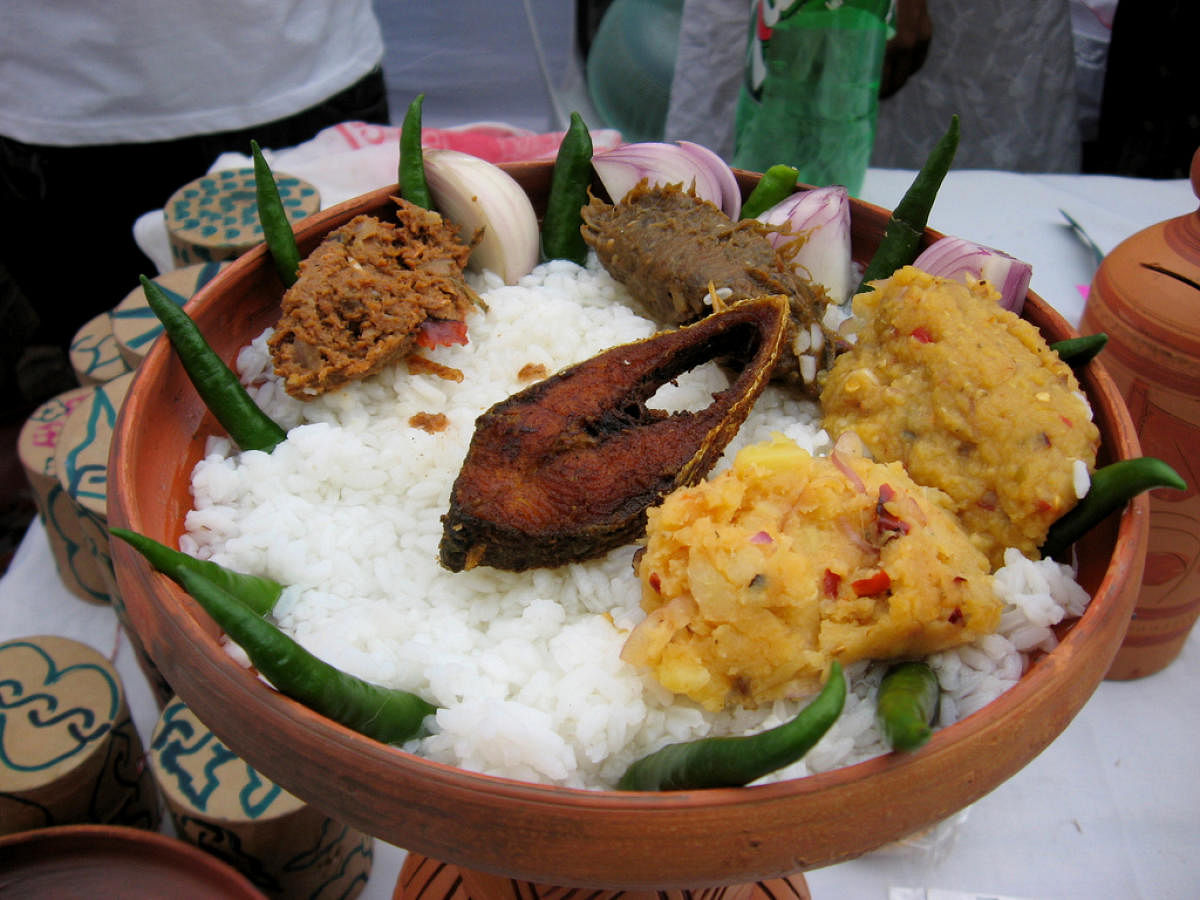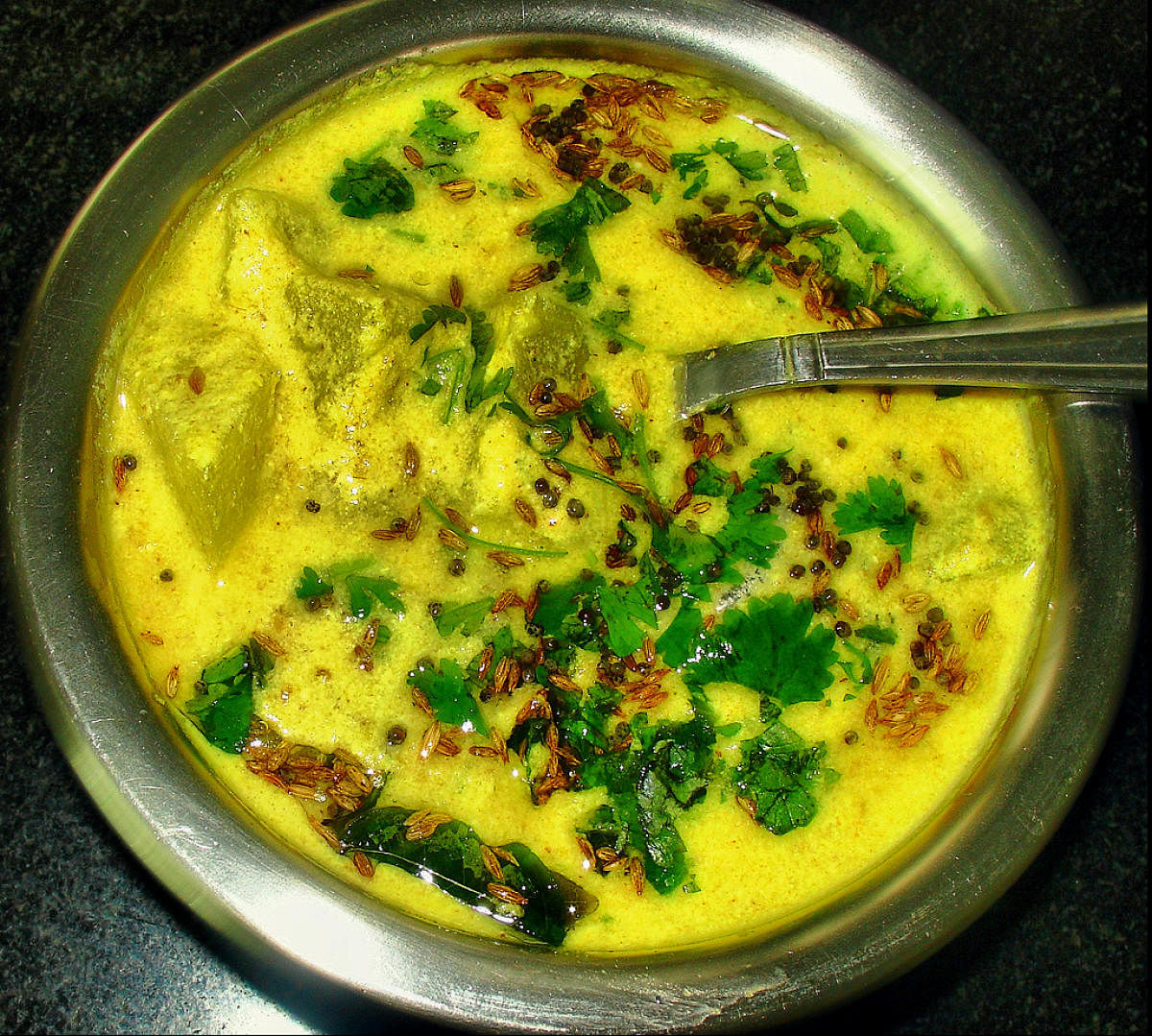

At MG Marg in downtown Gangtok, I chanced upon the traditional Nepalese Sel roti in a sweet shop. Roughly shaped like a doughnut, the soft brown fermented bread is made of rice soaked in water overnight that is pounded with aromatic spices. In Himachal, I found the fermented steamed bread Siddu made of wheat flour and stuffed with a filling. Though familiar with dosa and bhatura, Sel roti and Siddu might not ring a bell. We find our regional and tribal cuisine is surfeit with fermented food/drinks that are an integral part of their culture.
What is fermentation? It is a food preservation technique practised from time immemorial to preserve perishable food for a long time. In the process, it also enhances the taste and becomes more nutritious. Biologically, fermentation is an anaerobic process that breaks carbohydrates into organic acids, alcohol and gases by the microorganisms (bacteria, yeast, fungus).
“Fermented food is an important source of beneficial microbes that colonise our gut and protect the host from pathogens, boosting our immunity,” said Venkatesan Arul, Professor, Department of Biotechnology, Pondicherry University. Traditionally, in India, no microbes are added but the microbes present in the environment ferment the food. For curds, a little curd is used for inoculating the warm milk and after six to eight hours, fresh curd is set.
In the food and beverage manufacturing industry, fermentation technique is used to alter desirable changes in taste, flavour, nutritional profile and longevity of staple ingredients.
Korea’s Kimchi, Japan’s miso, China’s kombucha, Germany’s sauerkraut, America’s gherkins or the French Roquefort cheese have become synonymous with the region.
During the pandemic, sourdough bread was a craze. Featured in Masterchef Australia, the rustic panta-bhat (fermented rice and water) of Bengal also known as pakhala in Odisha, poita bhat in Assam, bore bhat in Chhattisgarh, pani bhat in Jharkhand, pazhedhu saadham in Tamil Nadu and saddi annam in Andhra took the internet by storm.
“Traditionally, south Indians were consuming quite a lot of fermented food that has gradually come down due to the fast-food culture,” Arul rued. Kerala’s Kallappam (rice pancake uses toddy), Kamban Koozhu (fermented bajra porridge), Mor Kuzhambu (buttermilk based), kanjika (fermented rice water), Ambali (fermented ragi porridge), vadas, appam, Mangalore banana buns (made of fermented banana dough) to name a few.
In the west khaman, idla (white dhokla), doli ki roti (Sindhi’s fermented bread), shrikhand, kurdai (fermented wheat snack), ambil (fermented summer drink), lonche (pickles), dried fermented fish are a few of them.
There is mattha (buttermilk), a variety of pithas like chakuli pitha or podo pitha from Odisha and Bengal, made of fermented rice and black gram, oal ka bharta (mashed yam) from Bihar in the east.
In North, apart from lassi, chhachh and sweet jalebi; the winter special kanji, a fermented drink made of black carrots, beetroot, mustard seeds, water and black salt is popular and snack kanji vada is popular. Gut-friendly cooling drink rabadi is made of buttermilk and barley or jowar or bajra in Rajasthan and Kulu is prepared with buttermilk and wheat in Himachal Pradesh.
In the Northeast, there are all types of fermented vegetables, bamboo shoots, fish, soybean, cheese and local liquor.
“In Northeast, the preservation of perishable food by fermentation is a native skill,” said Jyoti Prakash Tamang, Professor in Microbiology, Sikkim University, Gangtok. The naturally fermented soybean is a cheap source of proteins, known as inema, hawaijar, tungrymbai, bekang, aakhone, akhuni and peruyaan in different states. The Kinema is relished as a meat substitute.
Gundruk (fermented greens of spinach, mustard, cabbage and radish), sinki (fermented radish taproot), khalpi (fermented cucumber) and anishi (fermented leaves of yam) are fermented greens. The tender fermented bamboo shoots are prepared as khorisa, mesu, soibum, ekung and eup, lung-siej in Assam, Sikkim, Manipur, Arunachal and Meghalaya respectively.
In the hills of Sikkim and Ladakh, chhurpi, the sour cheese made of fermented yak or cow milk is a staple diet. The softer ones are cooked in curries while the harder one is chewed like betelnut.
All around the world, milk is consumed as it is high in nutrition but it is also highly perishable. Fermenting it as curd, cheese, buttermilk and yoghurt preserves them.
The fermentation of fruits or their sap makes natural vinegar like apple cider vinegar, jamun vinegar, kachampuli (Garcinia vinegar), coconut and toddy vinegar that preserves meat. Parsi’s Sal boti, Goan chicken xacuti and Coorg Pandi curry also owe their distinctive flavour to a specific vinegar. When it comes to indigenous alcoholic drinks, fermentation of grapes, rice, malt, barley and millets has a long history. In India, the Adivasis consider mahua (Madhuca Indica) liquor as sacred. Jharkhand and Odisha rice liquor Handia, the Himalayan tribal Chhang, tongba and arrack (fermented millets), Assam’s lau-pani (rice beer), Goa’s fenni (fermented cashewnuts), Kerala’s toddy (sap of palm tree), Bengal and Bihar’s tari (sap of khajur tree) are popular.